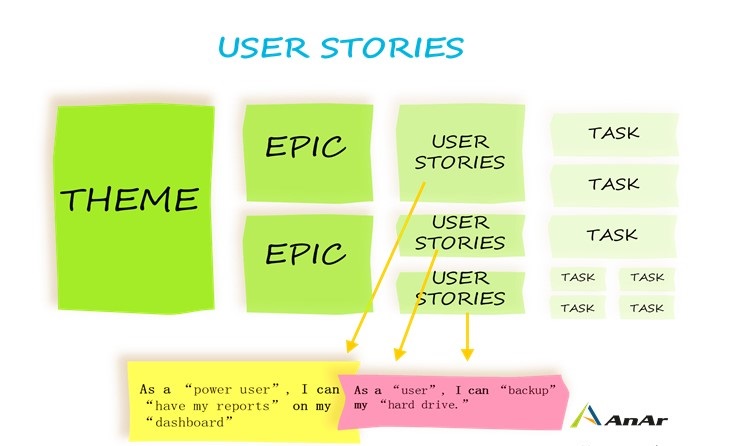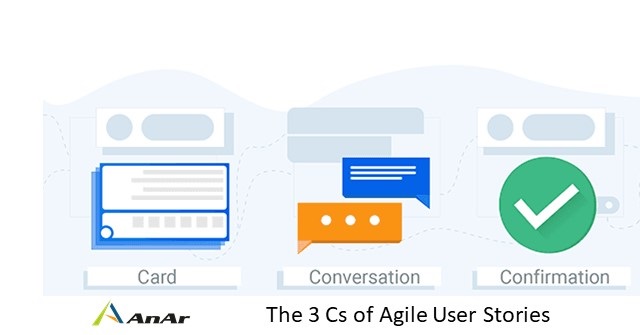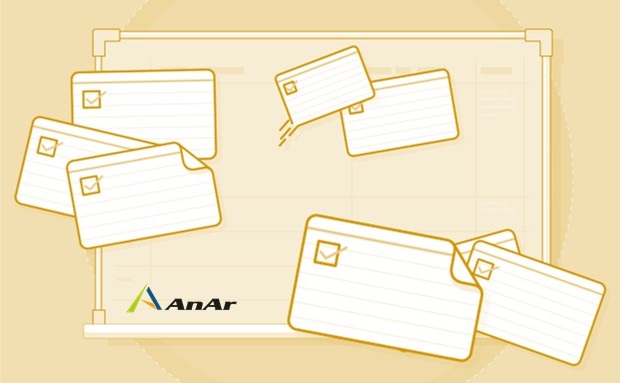In the dynamic world of software development, where speed, adaptability, and customer-centricity reign supreme, Agile methodologies have revolutionized the way teams approach projects. At the heart of this transformation lies the concept of Agile User Stories – concise yet powerful narratives that bridge the gap between developers, users, and stakeholders. These stories, carefully crafted to encapsulate user needs, aspirations, and objectives, serve as the compass guiding teams through the intricate landscape of software product development.
Imagine embarking on a journey where the destination isn’t a distant point on the horizon but a series of thoughtful interactions, collaborative discussions, and iterative progress. This journey is Agile, and its fundamental building blocks are the Agile User Stories – the subject of our exploration. In this blog, we’ll delve into the very essence of Agile User Stories – what they are, why they matter, and how they sculpt the path to successful project outcomes.
What are agile user stories?
Agile User Stories created in the Agile framework is an informal explanation of software product development. These stories are created keeping the customer’s perception in mind. It acts as an instrument to features of the software to benefit end-users. It is a simplified description for the external customers or the interdependent teams that exist within the organization. The user stories should use lucid language, add value, and yield desired end result.
A larger structure of the software is separately covered in parts for the users/ development teams. It allows the team to work on the requirements, plan effectively, and predict accurately. It is series of conversations that have a specific format i.e. “As a [persona], I want to [accomplish something], with the aim to [achieve a reward]”. And It distinguishes the role of the user, how and when the product will be delivered, and what is required to execute the plan. This format helps the story writer to be illustrative and explicatory enough to initiate discussions regarding implementation. The data should indicate values attached to your goals. Adroitly created user stories indeed improve the outcomes.
Why should you create Agile User Stories?
It allows development teams to focus on the project even if the size of the project is huge. A higher level of clarity with small descriptive stories breaks the project into series of steps to be followed. It helps in the proper integration of workflow. The team can prioritize the tasks that bring greater value to the customers.
Other key benefits of user stories are collaboration and creative solutions. It solves the problems of actual users, together they can figure out how would they achieve the goals. It develops critical thinking abilities to overcome the challenges of software delivery.
User stories give developers a purpose as to why they are creating the product.
Mapping Agile User stories with Business Requirements:
Typically, a requirement document consists of functional requirements, non-functional requirements, and few other requirements. The user stories can be used to contribute towards functional requirements which cover validation rules, user interfaces, business processes, and application security necessities.
The business and software needs should reflect in the product created. Focus on project standards, service delivery, hosting applications, and managing products. The prominence of a document is on what the project is built for, and the standards applied for the features and functions developed.
User stories include non-functional requirements such as business continuity, accessibility, and requirements that are attuned with information privacy and system security. It eases monitoring of organizational policies and processes.
The smallest unit of work in the agile framework is the user story yet is important from the software user’s perspective. A story map coordinates user’s stories according to a sequence of events of the software product development. It identifies the key tasks of the individual user to match the business activities. User stories benefit the workflow and backlog management.
How and who generates Agile User Stories?
A product owner is primarily responsible for writing user stories in some of the agile organizations. Moreover, it not being mandatory for any other stakeholder can create user stories. Despite which it is a shared responsibility and collaborative effort of amenable discussions between the developers, testers, designers, managerial authorities, and the customers.
These stories are written in simple language for the business and technical experts to understand every detail. It on other hand increases the contribution and confidence level of both parties.
Once the story is written teams get to know the outline of their tasks and subtasks. Task owner’s identification brings visibility for the entire team.
If you are confounded among user stories and other document writeups here are few distinguishing points.
- User stories express the values users draw out of an activity. They don’t include any features of the software that brings light to what the software can do. User stories and features are different.
- User stories and requirement documents are not the same as they are the criteria accepted by the client for software development. Developers need to satisfy this criterion to deliver value to the customer from this exercise.
- User stories and use cases are not identical, as the later uses business language. The case flow describes a sequence of interactions. It facilitates stake holder’s communication.
Inadequacies of Agile User stories:
- They are an informal form of documentation
- The brief stories cannot be complete input for implementing features
- User stories usually do not include performance and non-functional requirement
- Product team members choose to split development work into user stories as alternative to product features or product requirements
- User stories unnecessarily contain details rather than the main objectives of the product
- There are chances of getting lost in technical details
- For large projects maintaining user stories on physical cards is extremely difficult
- Multi-locational teams find it difficult to access the user stories on cards, scalability is a problem
- User stories are written from the business outlook hence do not represent how the application is built
- Lack of data on customer expectations cannot deliver quality user stories
- Common mistake is these stories do not estimate the efforts required to implement the user stories
- Assumptions than facts in consideration adds to complexities
- From the initial stage we expect to create perfect and dependable stories
Precautions to deal with the limitations of Agile User stories:
- User stories are at times not written keeping the users in mind
- Use simple tools to create stories and concentrate on a variety of requirements whether functional/ non-functional
- Mention timeframe in the stories
- Encourage methodological ways to create stories
- Listen to feedback to capture the exact problem to use it as the source for store
- Write a story for each large process
- User personas and templates both have great importance
- If there are multiple users separate stories should be created for their clarity
- Splitting stories in smaller parts can be of help to customers, technical teams, and management
- Create stories that reflect the conversation you had with your customer
- Unique identifier for each story raises traceability level
- Avoid letting developers write user stories as domain experts are not a perfect choice for writing simple stories that are easy to understand
- High/ Medium/ Low priorities assists the teams in task planning and timely delivery of a product
- User stories should enable programmers to predict the implementation stage and duration
- Bring consistency to the approach to create stories that matter
- For teams to perform at par they should be convinced about the stories so involve them in the creation phase
- Rigid stories can exterminate the purpose, keep scope for negotiations
Conclusion
Agile User stories ideally touch base on the qualities of every successful agile project. It comprises collaboration, coordination, confirmation, and communication from the stakeholders.
Originate wonderful user stories to deliver value with simple and innovative solutions to internal and external customers. To know more contact us.







